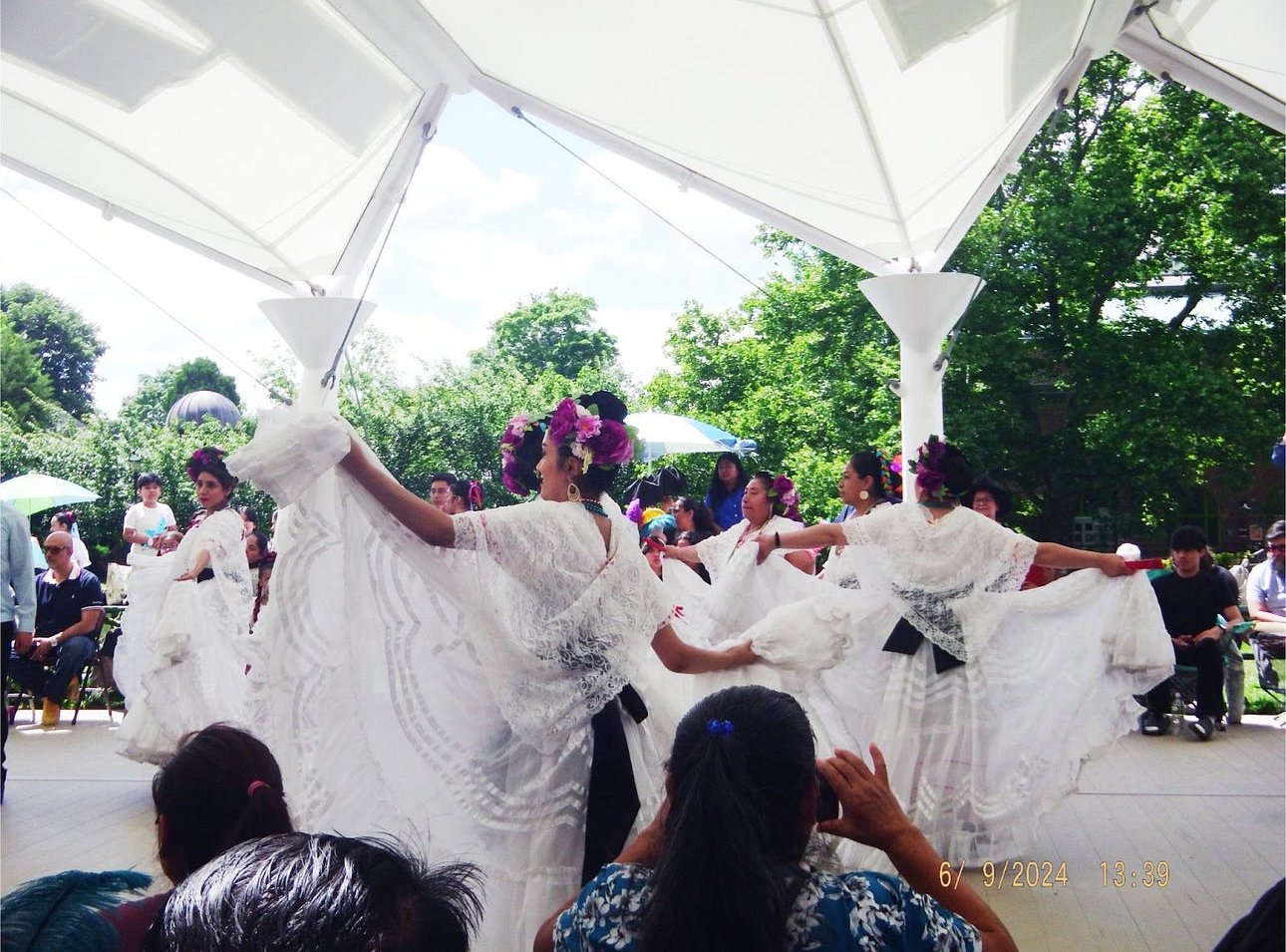Reconnecting from the Audience: Stomping out Shame with Baile Folklorico
By Diana Vidals
Growing up Mexican in a predominantly white area, my culture was always regarded with a mix of pride and contempt. While I have always viewed this piece of my identity with love and admiration, I carried a bit of shame deep within me. This shame would often rear its ugly head when my parents would speak Spanish in public, play their loud Mexican music, or do anything I knew was deemed weird, different, and wrong.
Now that I am older I have been working to surround myself in these aspects of my culture, finding beauty in what once brought me shame. My healing journey has submerged me in a passionate love for Mexican music. However, recently I have found a new infatuation that combines my love for performance and music… baile folklorico.
Baile folklorico (folkloric dance) is a collection of traditional cultural dances from Mexico’s different regions and states, each varying in footwork, choreography, and costuming. Inspired by cultural folklore, myths, legends, and history. Its most famous dances include El Baile de Los Viejitos, Jarabe Tapatío, and Danza de Los Voladores. With its hypnotizing spins, thundering stomps, and extravagant costumes, baile folklorico is one of the most beautiful aspects of Mexican culture.
I recently witnessed a few incredible performances at the Snug Harbor Cultural Center in Staten Island presented by the Calpulli Mexican Dance Company, an incredible organization focused on celebrating Mexican and Mexican-American cultural heritage through dance. Calpulli highlights Mexico’s history, traditions, and culture through shows such as Puebla: The Story of Cinco De Mayo and Monarcas.
This particular performance was to celebrate the organization’s program, Calpulli Community which offers dance and music instruction for students aged 5 to adults. Divided by age, each group represented a different region/state of Mexico in a traditional festival dance.
My personal favorites were the dances from Veracruz and Sinaloa. The Veracruz costume is one of my favorites. Its flowing white lace skirts, eye-catching gold jewelry, and blossoming flowers in their hair inspire a sense of beauty and regality. However, the music and dance of Sinaloa conquered my heart with the Toro Mambo. Full of sound and color, the dance is so lively. With its loud stomps, thrilling music, and mesmerizing skirt movement, it conjured claps, stomps, and cheers from the audience.
Viewing these performances from the audience was a moving experience feeling an immense feeling of pride. With its flamboyance and roaring stomps, there is no room for shame in baile Folklorico. As a Mexican-American baile folklorico has sparked a new appreciation for my culture, however, its beauty and cultural richness can be inviting for people of all backgrounds who appreciate the arts and culture.


